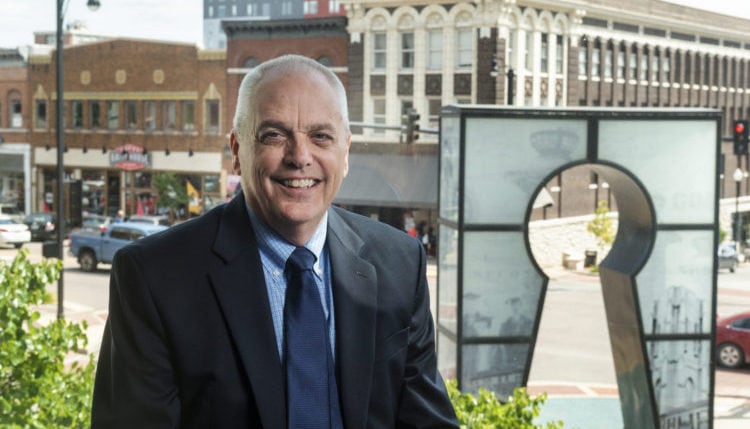Everyone can make a difference in the lives of the people they know and care for. But some people are in a position where they can make a difference in the lives of thousands. Columbia is fortunate to be home to a diverse group of civic, educational and business leaders who are building a better world — through their ideas, their decisions and their ability to muster support for their visions.
The five leaders featured in this issue of CEO magazine are prime examples of the sort of people who will be shaping the year 2020. Of course, there are dozens, if not hundreds or even thousands, of other Columbians whose daily work has a significant impact in their workplaces, in their professions and in the community. The list of such people would fill several magazines. But with only a limited number of pages, we’ve selected five: President of the UM System Mun Choi, CEO of MU Health Care Jonathan Curtright, Dean of MU’s College of Engineering Elizabeth Loboa, Chair of the Boone Hospital Board of Trustees Dr. Jerry Kennett, and Columbia City Manager John Glascock.
From behind the office desks where they work, their impact reaches throughout their organization, then radiates throughout their immense areas of influence. In some cases, their influence extends to the nation and scientific circles of researchers throughout the globe. The year 2020 would be very different and not as exciting were it not for these five leaders.
Elizabeth Loboa, Dean of MU’s College of Engineering
Elizabeth Loboa, Ph.D, isn’t among the forces that MU engineering students study, but her energy and enthusiasm are strong forces worthy of study in any curriculum preparing students for success as leaders.
She is dean of MU’s College of Engineering, vice chancellor for strategic partnerships, an active researcher of tissue engineering applications, a trailblazer for several major university projects and among other activities she serves on the boards of several community organizations and national associations.
The Pillars of Pursuit are the college’s priorities: educating engineering leaders, big data analytics, biomedical innovations and sustainability in FEWSed (food, energy, water and smart cities.) She says that it’s not enough to educate future engineers; her goal is to educate future leaders in engineering who serve their communities as well as their professions. She created the college’s Leadership, Engagement and Career Development Academy to offer students opportunities to grow these skills.
Under her leadership, the college has continually made strides in becoming more diverse. At least 30 percent of new faculty members are women or underrepresented ethnic minorities. “There still hasn’t been enough progress nationally (in attracting and retaining women and underrepresented minorities into engineering), she says. “The world is getting smaller, and it’s critical from the standpoint of innovation and strategy to get as many diverse viewpoints and backgrounds as possible.”
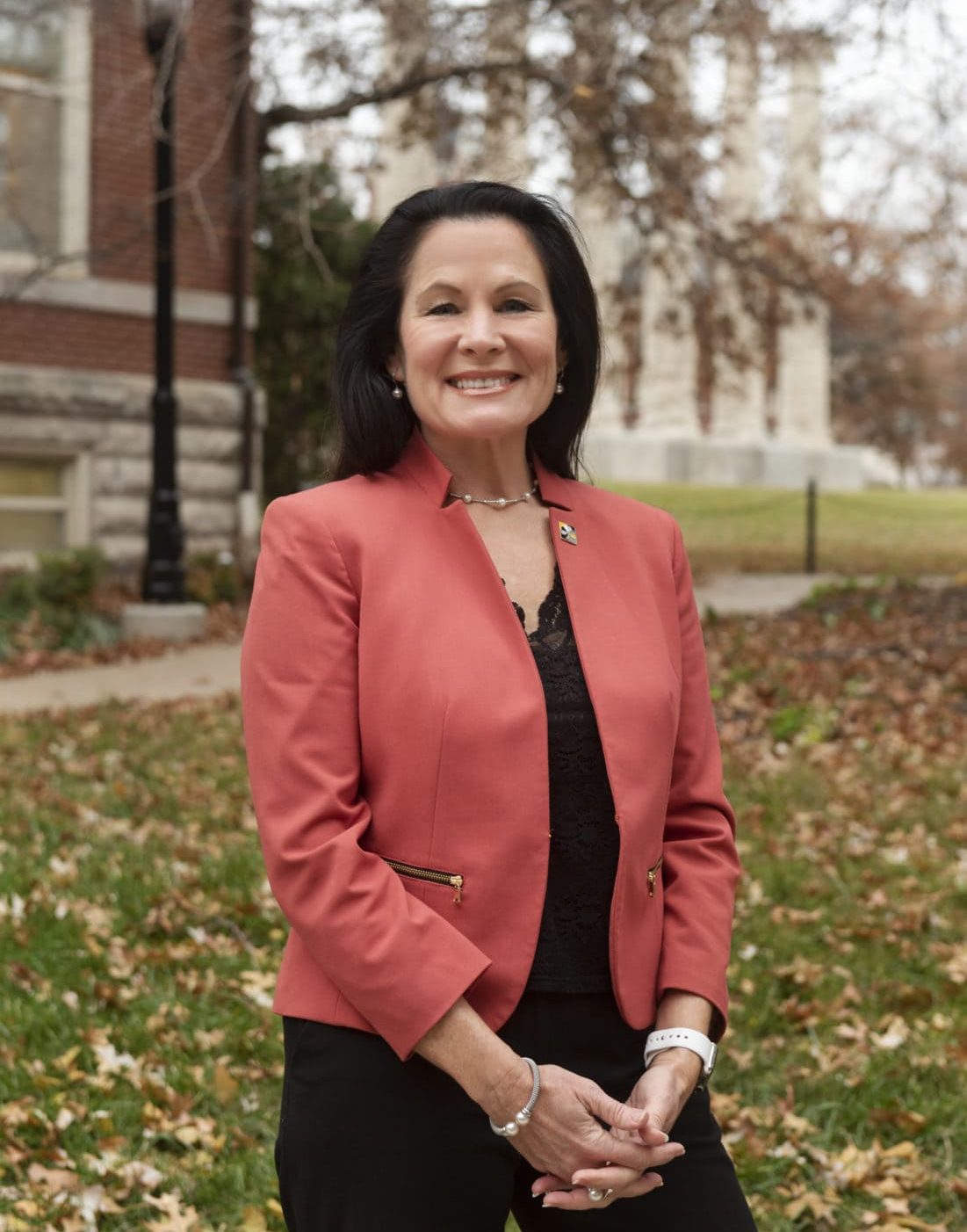
The world will seem even smaller, if Loboa’s efforts to bring the Hyperloop to Missouri pay off. Traveling at 760 miles per hour, the Hyperloop would shrink the journey from Kansas City to St. Louis to just 30 minutes. As a key person on the state’s blue-ribbon Hyperloop panel, Loboa is currently working on a proposal to create a three-mile test track. The development of the track would create a consortium of universities, based in Columbia, working together to make the Hyperloop a reality.
Loboa is bringing another group of researchers together, as one of the leaders of MU’s NextGen Precision Health Institute. “We have multiple MU colleges and schools participating in this project, “she says. “We’ll also be working with the MU research reactor, University Health Care and the VA Hospital.” The project will support medical research of the MU System’s four universities, moving fundamental research out of laboratories and into next-generation treatments and medical devices. The 265,000-square-foot facility is being built on the corner of Virginia and Hospital Drive and is scheduled to open in October 2021.
In her own lab in Lafferre Hall, Loboa focuses on tissue engineering and regenerative medicine. Working with stem cells isolated from human fat, she is studying techniques that make smart bandages. These bandages can trigger stem cells to differentiate and form bone or cartilage cells. They can also release compounds that kill multi-drug resistant bacteria.
It would be enough if Loboa’s energy and enthusiasm were limited to the 3,500 undergraduate and graduate students in the College of Engineering. But being dean is only one aspect of Loboa’s multidimensional career — a career that in 2020 will impact the university, state and researchers around the world.
John Glascock, Columbia City Manager
Personable, down-to-earth and approachable, Columbia City Manager John Glascock enjoys the complex task of overseeing the day-to-day operations of the city. “I’m in a buck stops here sort of situation,” he says. In a city that now employees 1,500 people and includes 52 separate budgets, a lot of bucks stop at his desk. He’s been doing the job since last July, but has been working for the city in various capacities for the past 17 years. Glascock brings the training of a civil engineer to his position as well as deep connections to the community. He was born, raised and spent most of his life in Boone County.
When considering his priorities for the coming year, Glascock has a sharp focus on the needs of Columbians. “Our number one priority is definitely the police department,” he says. “We need to add a traffic unit back in. That’s something we don’t have now.”
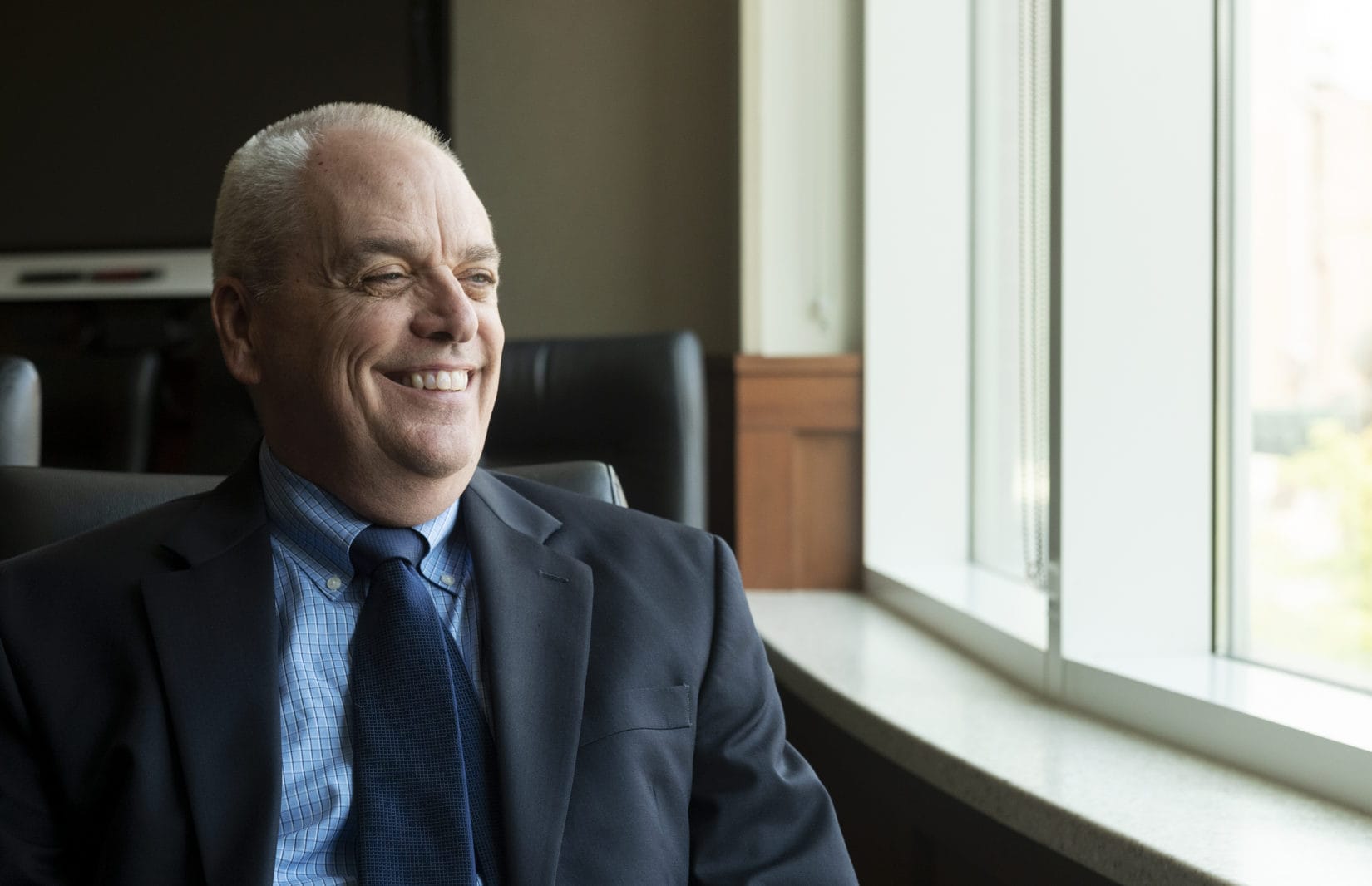
Also, at the top of his to-do list for 2020 is to make sure trash is picked up regularly and that the solid waste department is adequately staffed. “It’s a difficult job, and we have to look at the ordinances,” he says. Revenue is being lost because the current city ordinance allows people to put as much trash out as they want and pay the same as if they put one sack on the curb. Glascock would like to see an ordinance that ensures that people who put out more trash are charged more.
As city manager, Glascock doesn’t have the authority to change ordinances. That’s the role of the City Council. It will be Glascock’s task to ensure the Council members are aware of the problems with trash pickup and are up to speed on the various options for addressing it. Because the city budget is determined a year in advance, Glascock is already working on the 2021 budget.
In a perfect world, the city would always have the money it needs to improve services, but over the past few years the internet has taken a bite out of the city’s tax revenue. “We’re not shopping as much at the brick-and-mortar stores within city limits,” he says. “For the $100 you spend in the city, we get about $2, but if you spend it online, we don’t get any of that.”
Budgeting is only part of Glascock’s job. What motivates him is that “I get to talk to people from all walks of life each day, and it’s fascinating. We think of Columbia as one big place but it’s really about each of the people that make it up. It’s rewarding to me just to hear those stories,” he says.
Jonathan Curtright, CEO, MU Health Care
Jonathan Curtright, CEO of MU Health Care, is a realist and a pragmatist. He also has to be something of an optimist to work in the continually changing and challenging field of health care. His decisions affect not just the nearly 8,000 employees of MU Health Care, but the 800,000 mid-Missourians who live in the system’s catchment area.
When considering the year ahead, he reckons with government policy, insurance trends and the mid-Missouri marketplace. “Every medical center in the United States faces continued revenue pressure, whether it’s from Medicaid or commercial insurers. As well, we have pressures on expenses. There’s major pressure to be competitive with the wages we pay our staff, plus inflationary pressure affecting medical supplies,” he says.
Curtright has proven himself adept at turning challenges into opportunities. His response to these pressures has been to develop growth strategies for the system. “We must get more scale — more size — so that even if our margins are dropping, our overall income will make our clinical and academic mission sustainable,” he says. “Scale is our friend.”
Growing MU Health Care has meant an emphasis on the creation of alliances and partnerships. “We’ve been able to increase scale by opening the front door of our system to primary care physicians in Fulton and Ashland. We continue growing our partnership with Capital Region Medical Center in Jefferson City, and we’ve expanded our electronic medical records to Lake of the Ozarks, as well,” he says.
Curtright anticipates that changes in the management of Boone Hospital Center won’t interfere with their clinical partnerships. Boone Hospital Center is in the process of severing its ties with BJEC Healthcare to become an independent hospital. “Boone Hospital Center has been and will continue to be a good clinical partner with us,” Curtright says. “We’ll continue that partnership, especially in the care that they may not be providing as frequently as we do as a Level One Trauma Center, A level One Stroke Center and a Level One Cardiovascular Center,” he says.
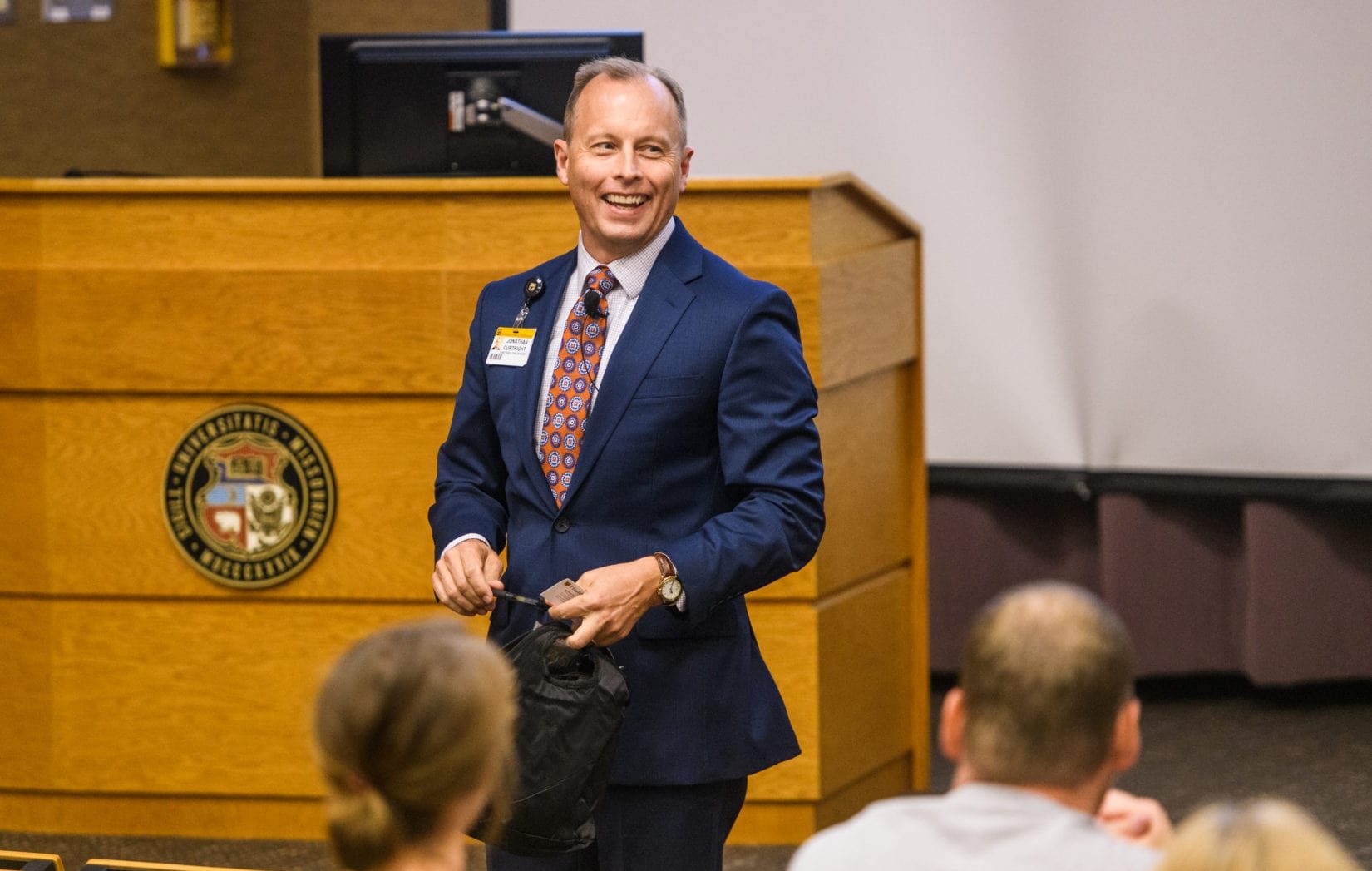
Although mid-Missourians see MU Health Care as a giant, Curtright has a different perspective. Compared with other academic health care systems in the nation, MU Health Care is in the bottom third in terms of revenue. He uses the University of Iowa health care system as an example that inspires him. “For research, education and clinical practice, the University of Iowa has a net revenue of about $2 billion, about 40 percent larger than us. We know that scale is good financially for our operation, but it’s also very, very good in terms of our academic and research opportunities as well,” he says.
Curtright is confident about the future and is banking on MU Health Care’s reputation to support more partnerships that will help it expand. “We’re an academic center that has become big enough that we matter, but yet we’re small enough that it’s really much easier to do complex business with us than with some larger health care systems,” he says.
President of the UM System Mun Choi
President Mun Choi goes about his task of leading the UM System with the precision and clear vision of an engineer. That’s to be expected, considering that he has a Ph.D. from Princeton University and a joint-appointment as a professor of mechanical and aerospace engineering at the University of Missouri-Columbia. Although being a rocket scientist isn’t a requirement for his administrative role, it doesn’t hurt that he has the kind of intellect that has concerned itself with researching the properties of rocket and aviation fuel.
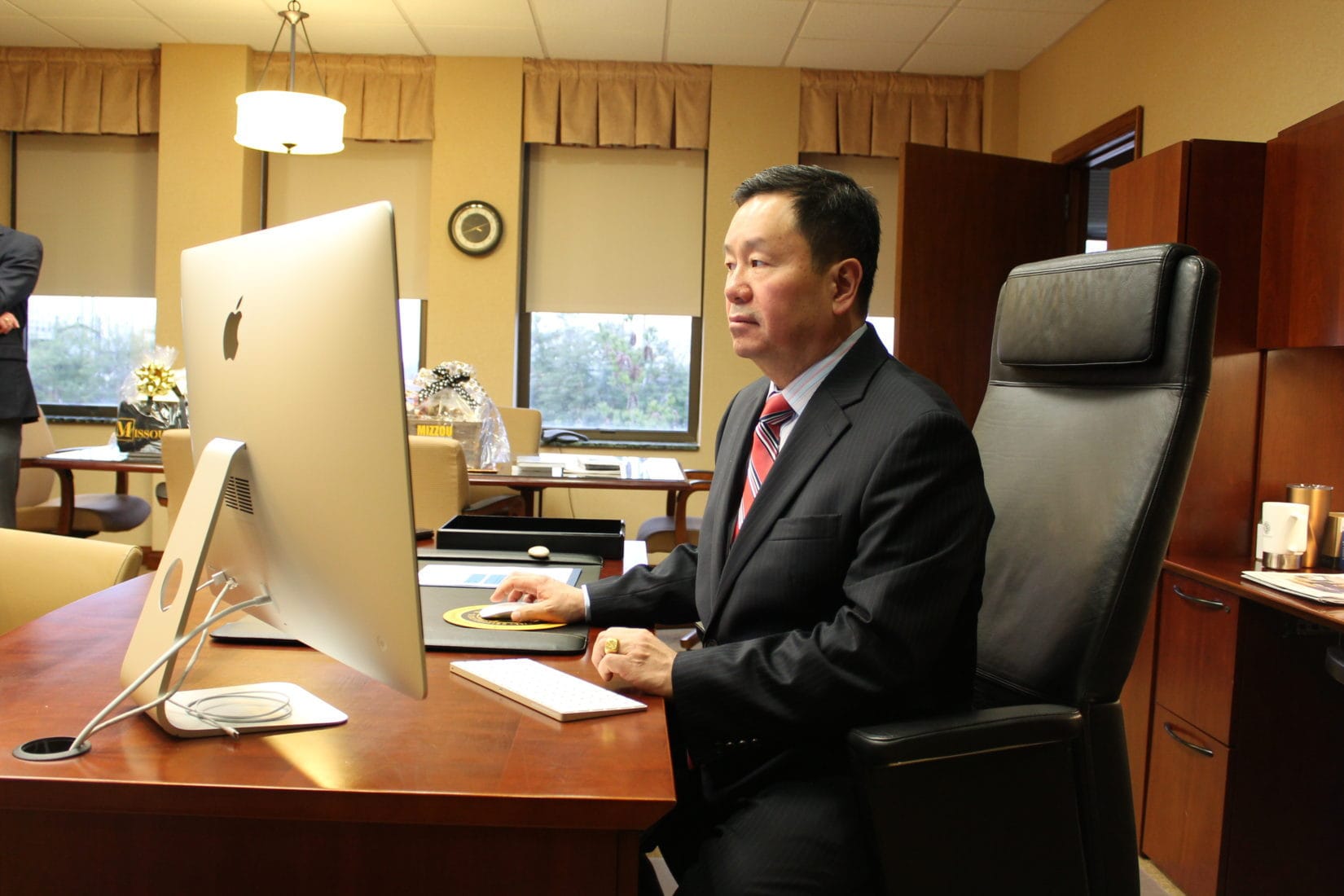
Like a scientist testing different hypotheses, President Choi has an intuitive understanding that progress is dependent on exploring new ways of doing things. “Traditions are very important,” he says, “but they can stand in the way of progress. Our greatest challenge is having our constituents recognize that traditional ways of operating the university are no longer going to be successful when there are so many disruptions that are going to be over there — including new learning opportunities from companies that provide certification of their employees while bypassing universities.” He also mentions that reduced state support for public universities is a driver for change. “These are all things we must address head-on and find creative solutions to overcome,” he says.
As he breaks through traditional ways of doing things, President Choi will be guided throughout the coming year by a strategic plan, comprised of five compacts for excellence. “You begin with student success,” he says. “We want our students to get a high-quality affordable education that will prepare them to become leaders in their chosen field.”
Other elements of the compact include research, engagement with the community, inclusive excellence and operational excellence. “We recognize that research at our institutions can have an impact beyond the intellectual merit but also can bring broader benefits to our community and our society,” he says.
The outreach and engagement element of the plan ensures that the organization “lives up to our land-grant mission.” And the other two elements focus on diversity and efficiency. “Although we run the university as a nonprofit, we must be very creative in creating new revenues that ensure we can make investments in our priorities,” he says.
As president, he oversees the administration of four universities, MU Health Care, extension services that reach into all of Missouri’s 114 counties, plus ten research and technology parks. If that sounds like an extremely large enterprise, that’s because it is. The UM System is a major employer and revenue generator for the state of Missouri, a $3 billion enterprise, according to the UM System website.
President Choi assumed his responsibilities for the UM System in March 2017, when university enrolled had declined sharply. Under his leadership, the decline stopped and enrollment has been increasing each year.
Born in South Korea, he immigrated to the U.S. with his family as a child. He lives here in Columbia and is married with three children.
Dr. Jerry Kennett, Chair of the Boone Hospital Center Board of Trustees
For Dr. Jerry Kennett, chair of the Boone Hospital Center Board of Trustees, 2020 could be called the Year of Transition. He and the other four trustees — Randy Morrow, Jan Beckett, Greg Steinhoff and Bob McDavid, along with their consultants — will be ensuring that when the lease with BJC Health Care ends on Dec. 31, 2020, Boone Hospital will be ready to stand on its own as an independent community hospital.
To direct Boone Hospital’s transition, the trustees will be hiring an interim transition executive. This person will not become the future CEO of the hospital, but will oversee the shift to independent operation. “The executive will be dealing with all the contractual issues, managed care issues, everything that must be put in place to run Boone Hospital Center after the transition occurs,” says Dr. Kennett.
In addition to this key executive, other employees will be added throughout the coming year. Currently BJC Health Care takes care of all aspects of the hospital’s revenue cycle, which includes all administrative and clinical functions of patient accounts, from scheduling to final payment of bills. Some of those functions will be moved in-house; others may be contracted out.

Beyond the walls of Boone Hospital Center, other changes are in the works. “BJC had a philosophy of not doing joint ventures with physicians,” says Dr. Kennett, “but we are now in the process with our advisors of creating a network of physicians and smaller community hospitals that will become a health care delivery network.” Joint ventures are a type of strategic alliance where market, assets and profits are shared among the partners. “We’ll be able to go to an employer and sign a contract on behalf of our group so that patients can receive their care in local a hospital or, if they need more specialized care, they can be referred to Boone Hospital,” he says.
Dr. Kennett says that what won’t change about Boone Hospital is the quality of care patients receive. The hospital is one of a select group to receive a five-star rating from the Centers for Medicare and Medicaid Services. “I would emphasize that Boone Hospital has been evaluated and is considered a high-quality, low-cost provider,” he says.

